Gardening – Home Garden Ideas from Planting to Harvest
Gardening has enjoyed a resurgence in recent years, with folks tackling everything from small container gardens to large scale permaculture landscape transformations. No matter what your growing space or budget, if you’re willing to invest some time and effort, you can get a harvest.
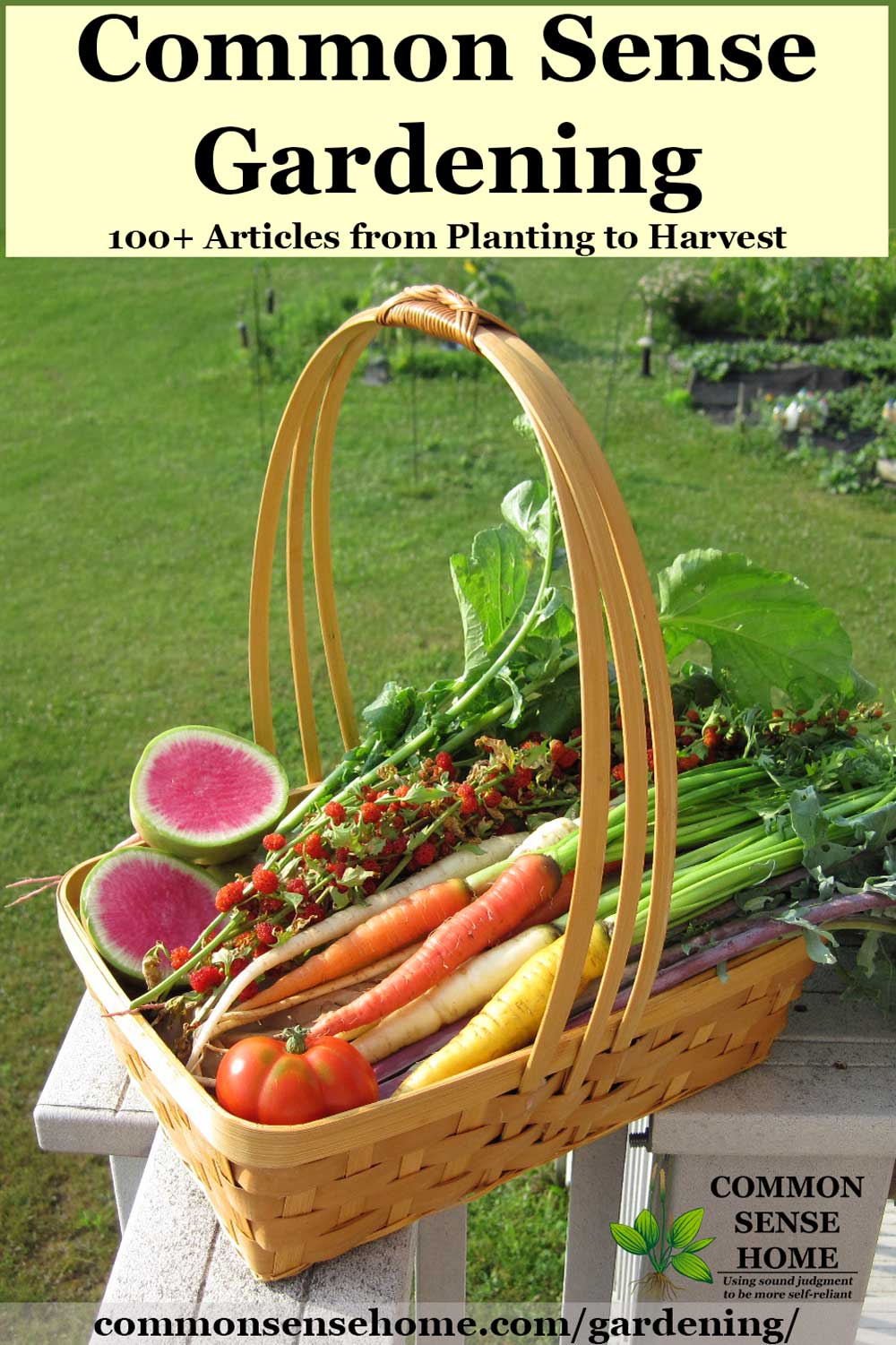
My home garden is in northeast Wisconsin, zone 4/5, about 15 miles from Lake Michigan. Our winters are somewhat tempered by the lake, but our location along the Niagara Escarpment puts us in one of the windiest areas of Wisconsin.
Our last frost date is generally around mid-May, our first frost date often hits mid-September. There are also some articles from my brother in zone 3, and my friend, Amber, in zone 8.
We’ll continue to add to the gardening posts as time and inspiration allow, but if you have a specific question or request, please leave a comment and let us know!
With your subscription to Common Sense Home, you’ll get free access to the Common Sense Home Garden Planning Kit, which includes:
- Seed purchase log
- Planting and Germination record
- Seed Starting and Transplanting Calendar
- Customizable seed sowing schedule
- Seed longevity chart
- Seed germination rates after storage
- Plant spacing chart
You’ll also get regular updates throughout the year with gardening and food preservation tips in our weekly newsletter, and the opportunity to share your ideas for upcoming gardening courses.
Getting Started Gardening
Is your gardening goal to feed your family or have a few fresh tomatoes, or something in between? The bigger your goals, the more time you’re likely to need to spend in the garden.
I suggest starting small and scaling up, focusing on some of your favorite crops. Herbs and flowers should be welcome in every garden, even if you don’t use them for cooking. They often help repel pests and create a habitat for pollinators.
How to Start a Garden – 10 Steps to Gardening for Beginners
Free Gardening Journal Templates and Other Garden Record Keeping Tips
Companion Planting in the Garden (The Easy Way) – Includes Printable Chart
Small Garden, Big Yield – 10 Tips for a Great Harvest
Introduction to Aquaponics: Growing Fish and Vegetables Together
Phytophotodermatitis – Plants That Cause It, How to Treat It
Bumblebee – Super Charged Pollinator for Your Yard and Garden
Soil Health and Fertilizers
Soil Testing – 5 Easy Tests for Your Yard and Garden
Organic Fertilizer – Feed Your Plants, Soil and Microbes
Composting 101 – Easy Compost Making and Troubleshooting Tips
Music for Plants – What Helps Plants Grow and What Doesn’t
The Right Way to Use Wood Ash in the Garden
Seed Starting
Some crops are best direct seeded in the garden, and some do better as transplants. Which crops fall into each category will also vary depending on your growing conditions.
As a northern garden, I start many of my heat loving plants inside. I love having plants growing while waiting (somewhat impatiently) for spring.
Starting my own seeds also allows me to choose from a much wider array of plant varieties, including hard to find heirlooms and rare plants.
Build Your Own Simple Seed Starting Shelves
Starting Seeds Indoors – 11 Steps to Help You Plant Seeds with Confidence
10 Heirloom Seed Companies You Don’t Want to Miss
When Should I Start My Seeds? Printable seed starting calendar
Grow Tomatoes from Seed – Save Money, Get More Varieties
How to Store Seeds (for Next Year or Long Term)
How Long do Seeds Last? (with Printable Seed Viability Charts for Veggies, Herbs, and Flowers)
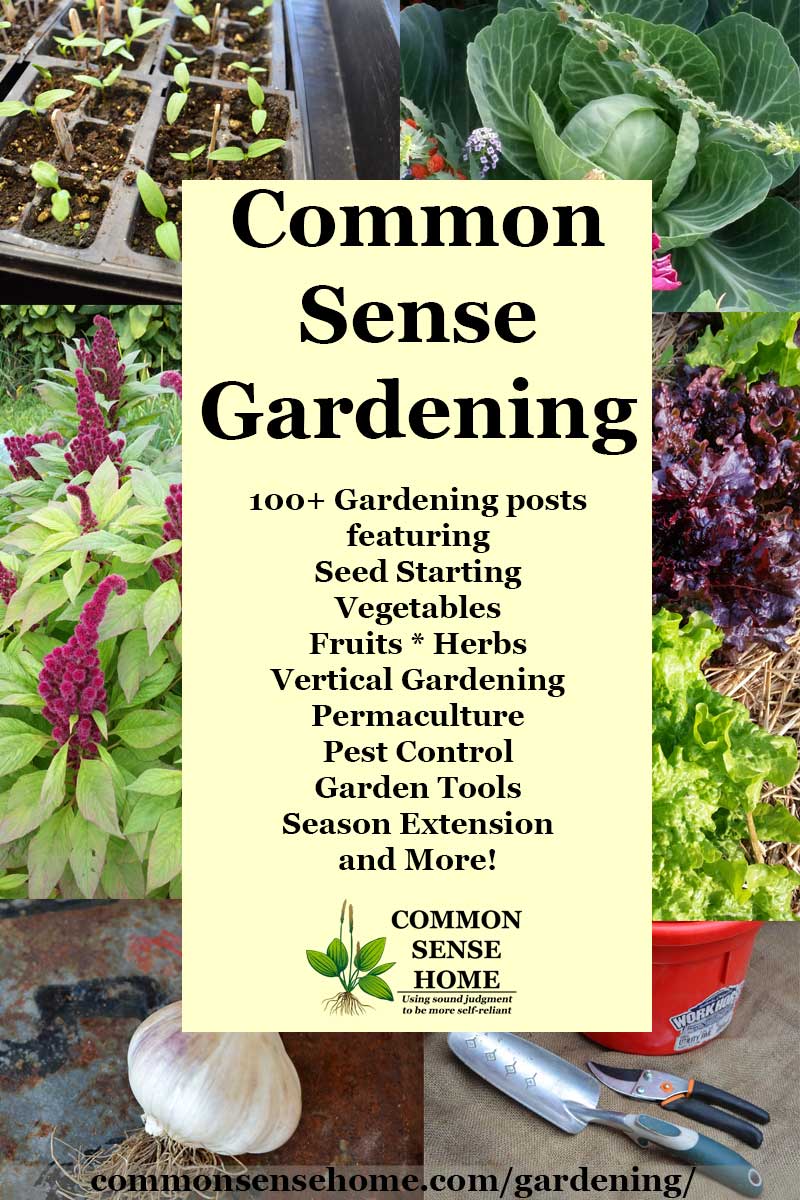
Vegetable Garden
Veggie gardens are probably what most people first think of when they think “home garden”, and for good reason. With only a modest commitment of growing space and effort, you can pick your first harvest in a matter of weeks.
Some crops mature more quickly (like salad greens and radishes), some require more time (like parsnips and pumpkins). Check the “Date to Maturity” listed on the seed package for an estimate of time to harvest.
I’ve grouped asparagus and rhubarb with the veggies, even though rhubarb can be used in both savory and sweet recipes. Tomatoes are also here, since they are typically used more like a vegetable than a fruit.
Pepitas (hulless pumpkin seeds) also get to go with the veggies, since to grow the seeds, you need to grow the right pumpkins.
18 Fastest Growing Vegetables (Indoors, Garden, Containers)
Summer Gardens – Dealing with High Temperatures in the Garden
Too Much Rain in the Garden – Managing Wet Dirt and Waterlogged Plants
Damaged Crops – What to Do When Hail and Wind Damage Your Garden
Growing Asparagus – Planting, Care and Harvesting a Perennial Favorite
5 Tips to Grow Bigger Broccoli Heads
How to Grow Lots of Pole Beans for Easy Picking and Preserving
Growing Carrots – Quick Guide, Step by Step Instructions and Carrot Q&A
Growing Onions from Seed – 5 Tips for a Great Harvest
Planting and Growing Peas – What You Need to Know
Grow Your Own Pepitas (Hulless Pumpkin Seeds)
Growing Potatoes the Easy Way – Potato Towers
The Complete Guide to Growing Rhubarb
Strawberry Spinach – Add Some Variety to Your Salads
Before You Plant Sunchokes, You Need to Read This Post
Tomatoes
Types of Tomatoes (Best Uses, Flavors, Plant Sizes)
How to Grow Lots of Tomatoes Organically, Plus Innovative Gardening Techniques
Tomato Flowers But No Fruit, or No Tomato Flowers – 9 Troubleshooting Tips
4 Reasons your Tomatoes Aren’t Ripening
7 Steps to Stop Blossom End Rot & Get Rid of Black Bottomed Tomatoes
How to Ripen Green Tomatoes at the End of the Season
How to Save Tomato Seeds – Easy to Follow Guide
Fruit Garden
Homegrown fruit is wonderful, but it often takes a more long term commitment. Our perennial fruit crops are still young, so I’ll be adding to this section as they come to maturity.
Growing Blueberries – Quick Guide and Master Grower’s Tips
How to Grow Elderberries for Food and Medicine
How to Grow the Best Raspberries You’ve Ever Tasted
How to Tell Watermelon is Ripe – 4 Tips for Picking Good Watermelon
Herb Garden
Most of the herbs I’ve grown over the years have done well with little help from me. I tend to tuck them here and there in my vegetable gardens, orchards and wherever else there’s room. If you have a specific herb growing request, let me know.
Herb Garden Ideas – Fun and Functional
Borage – Growing Tips and Uses
How to Grow Garlic – From Planting to Harvest
Grow Stevia and Make Your Own Liquid Sweetener
Sage Benefits for Home, Health & Personal Care
Vertical Garden
Because of our strong winds, any vertical gardening I do has to be very sturdy. I can’t take advantage of as many options as someone in a more sheltered location, but I still make use of trellises and other plant supports to maximize my gardening productivity.
Raised Garden Beds – 5 Steps for Surefire Success
11 Vertical Gardening Advantages
Vertical Vegetable Garden Ideas (Over 20 Photos)
5+ Terrific Tomato Trellis Ideas
5 Reasons the VineSpine™ is the Best Garden Trellis
Garden Tools and Equipment
Self Watering Planters – DIY Demo, How They Work, Tips for Use
Compost Tumblers – Pros and Cons – Best Tumbling Composters
Cleaning and Sharpening Garden Tools
My Favorite Gardening Tools – Save Time, Boost Yields, Enjoy Gardening More
Digz Gardening Gloves – Review and Tips for Use and Care
Rainwater Harvesting Guide – Rain Barrels, Maintenance and More
Pest Control
My first level of pest control is to try and get everything growing so healthy the pests don’t bother it much.
Unfortunately, gardening happens – drought conditions, extreme heat or cold, too much rain or other plant stress creates conditions favorable to garden marauders. Usually some minor intervention and TLC gets things back on track and saves the harvest.
Blueberry Netting Tips – Protecting Blueberries from Birds (& Deer)
Attracting Beneficial Insects for a Better Garden
The Ultimate Guide to Natural Pest Control in the Garden
Duck Pest Control – Working with Ducks in the Garden
Flea Beetle Control (with Tips for Saving Damaged Plants)
Homemade Bug Spray for the Garden – 3 Easy Recipes
6 Ways to Use Garlic in the Garden
Keep Deer Out of Your Garden – 5 Deer Deterrent Strategies
Papaya Ringspot Virus in the Garden – Control and Prevention
Eating Bugs – Free Food from Your Backyard
Permaculture
Permaculture is more than a gardening style, it’s a way of life. Based on the root words of “permanent culture” or “permanent agriculture”, it uses a systems approach with a heavy reliance on perennial plantings.
The design ethics combine earth care, human care and return of abundance or surplus. The soil is protected and enriched, not destroyed. Water is gathered and filtered, recharging aquifers.
Sound impossible? People are applying the principles around the planet – with amazing results. We’ve only just begun changes on our land, and already I can see a notable difference.
Permaculture Design Elements – 3 Keys You Need to Know
Self- Reliance Starts at Home – Introduction to The Permaculture Student
Sustainable Methods for Dealing with Drought
Our Homestead Permaculture Project – Site Overview
Holzer Permaculture – A Lifetime of Food Growing Innovation
Biochar – Amazon Secret Rediscovered
Beyond the War on Invasive Species – A Permaculture Approach to Ecosystem Restoration
Sustainable Methods for Dealing with Drought
Season Extension
With a little protection, cold climate gardeners can get a jump on spring planting and not be “stopped cold” by fall frost. We have a small attached greenhouse, a larger detached greenhouse and a couple of cold frames to help with season extension.
Plant Hardiness Zones and Microclimate – Creating Your Best Garden
Protecting Plants from Frost – 12 Ways to Beat the Cold Weather
Build a Secure Greenhouse Foundation That Preserves Your Growing Space
The Practical Greenhouse Guide – What You Need to Know Before You Build a Greenhouse
Indoor Garden – 12 Reasons to Grow Organic Food Indoors
Crop Storage
You don’t have to grow year round to eat year round from the garden. A number of crops lend themselves to easy storage “as is” when properly cured.
Some require cool temps and high humidity, others store fine at regular room temp. Parsnips are a favorite of mine, as they overwinter right in the ground. As soon as the ground thaws in spring, we have one of our “first” garden harvests of the season.
The 5 Easiest Vegetables to Store
Above Ground Root Cellars – Enjoy Your Local Produce Longer
Build Your Own Walk In Cooler with a CoolBot Controller and A/C Unit
How to Harvest, Cure and Store Onions
When to Harvest Pumpkins (and the Best Ways to Store Them)
What are shell beans? (Growing Tips, Usage, Storage)
How to Store Potatoes Long Term
Parsnips – Growing, Harvesting, Use & Cautions

Preserving the Harvest
Some crops require a little more effort to enjoy in the off season, but once you taste the difference in homegrown fruit and vegetable quality, you’ll be hooked. Our family uses a variety of food preservation techniques, for a variety of flavors and textures.
Home Food Preservation – 10 Ways to Preserve Food at Home
How to Can Food at Home – Quick Guide to Safe Home Canning
Home Food Drying – 6 Things You Need to Know to Dehydrate Food at Home
Home Freeze Drying – The Good, The Bad and The Ugly
How to Freeze Peas from the Garden
How to Infuse Herbs in Oil, Water, Vinegar, Alcohol or Honey
Don’t forget to check out the recipe page for recipes that use fresh garden produce, including canning and preserving instructions for several crops.
Home Garden Inspiration
Musings and ideas, why “soil” is more than “dirt” and tips for our winged friends and other wee beasties.
Garden Gifts They’ll Love – Practical, Beautiful and Unique
5 Tips for a Bee Friendly Yard
Dirt Therapy – 8 Reasons You Need to Have a Garden
5 Reasons I Want Weeds in My Garden
Confessions of a Messy Gardener
What if I Told You Weeds and Bacteria Could Save Your Life?
Giant Vegetables – How Big Do the Record Holders Get?
Stop the Dandelion Madness! Making Peace with Dandelions and Bees
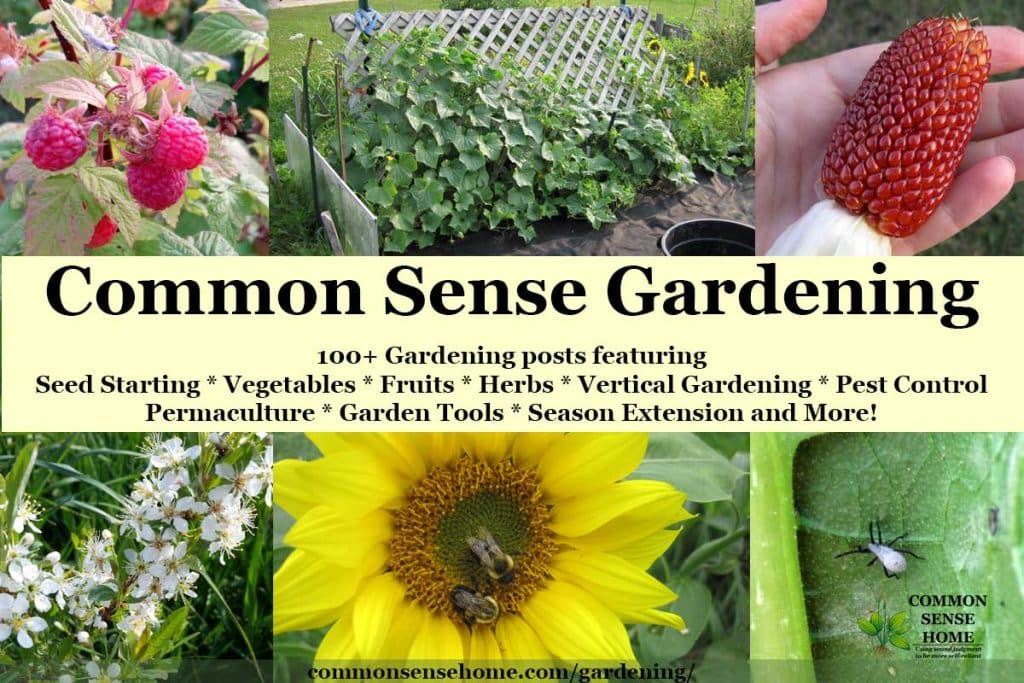
Gardening Book Reviews
Edible Landscaping with a Permaculture Twist
Building Soils Naturally – Innovative Methods for Organic Gardeners
Working with Nature – Shifting Paradigms and The Essence of Organic Gardening
The Planet Whizbang Idea Book for Gardeners
The Bio-Integrated Farm – Water Gardening Like You Never Imagined
Restoration Agriculture: Real World Permaculture for Farmers
The Market Gardener: A Successful Grower’s Handbook for Small-Scale Organic Farming
The BackYard Orchardist – Learn to Grow Over 10 Different Fruits
Wildcrafting – Using Your Weeds
Although not standard “garden” elements, my weeds are also harvested for culinary and medicinal use. You can view the Weekly Weeder and Herbal Posts for more ideas on how to put your weeds to work.
Originally posted in 2012, last updated in 2019.

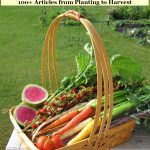
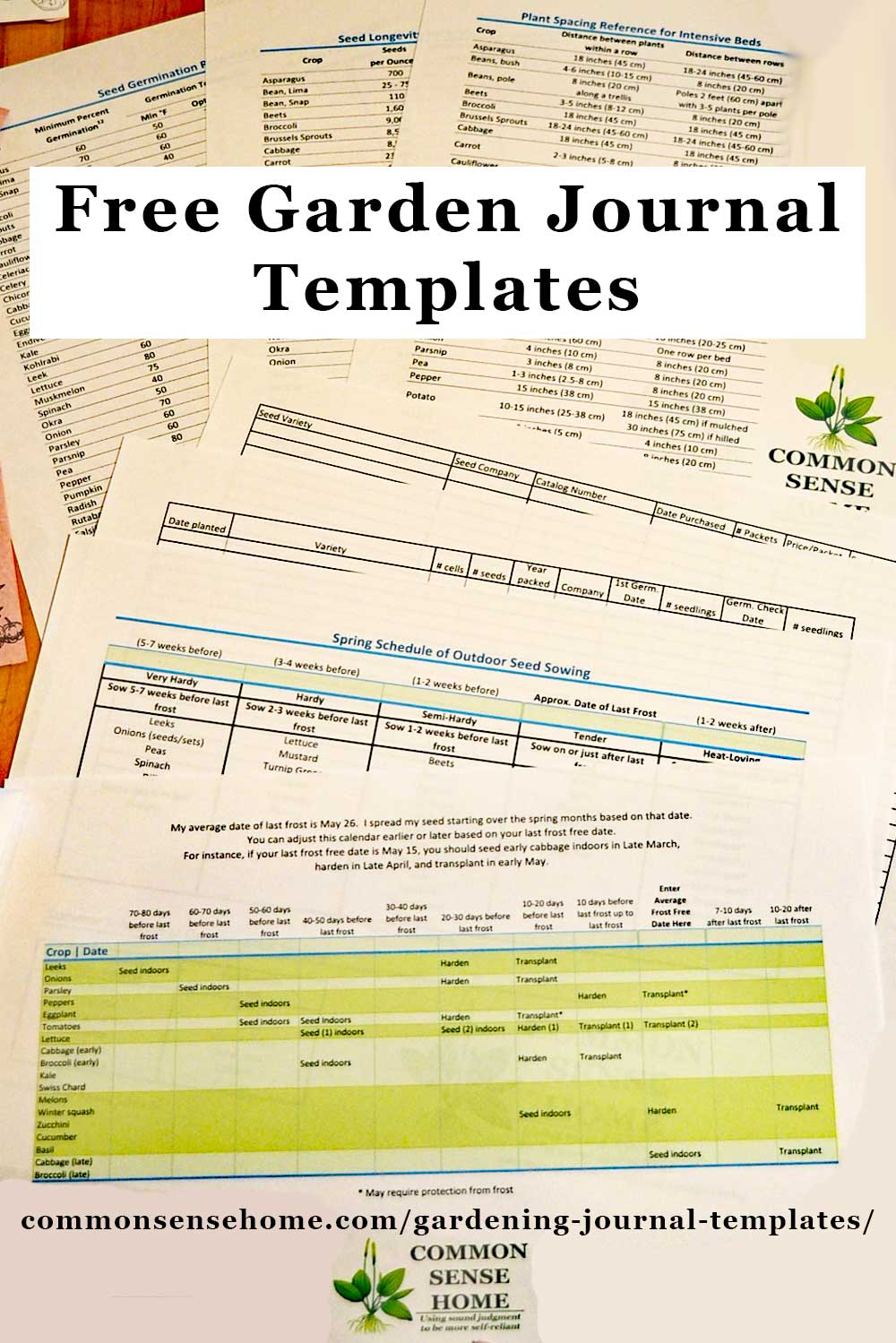
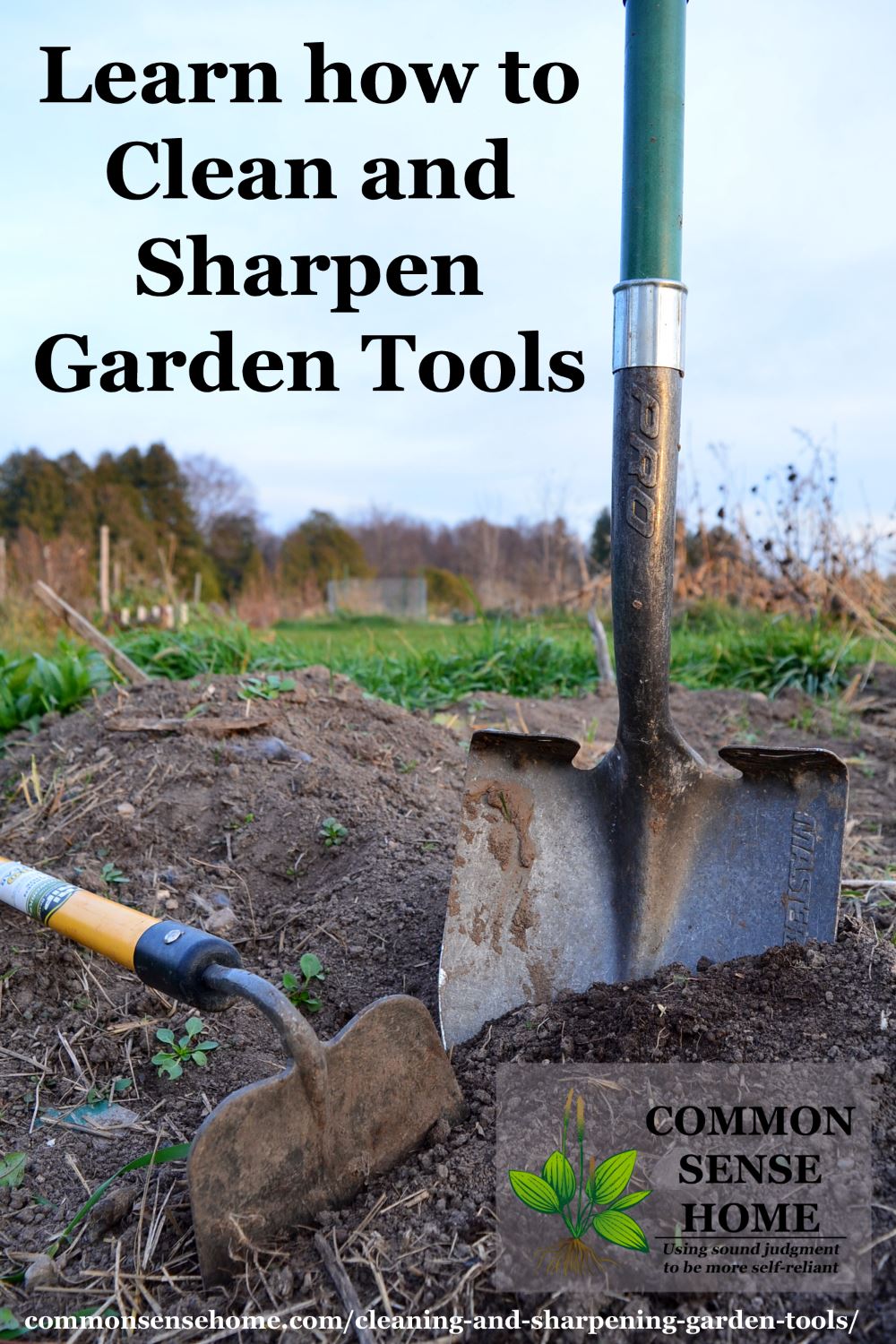
Hi Laurie,
Just read your post about the coronavirus in Washington. I pray that you and your family will stay well.
We have moved from Oregon near Medford to the Dallas Texas area. Because we are renting, I will be doing all of my gardening in containers this year. I aj trying to find seed potatoe for Russets and also sweet potato starts. Is there any internet site that you could recommend for me to look? Sure would apreciate your input.
Thanks for your help.
Suzanne
Hi Suzanne.
We usually get our starts from Pinetree Garden Seeds, but maybe Southern Exposure Seed exchange would be a better fit for your new location? You could also try and make contact with local gardeners to see if they have a source they love.
Wow that weather sounds crazy! I would find it useful maybe by vegetable like everything to do with tomatoes how to grow them proper fertilizers for best results, what they grow well with and what not to grow with tomatoes, what herbs to place near them to help keep critters away. I just used tomatoes as an example. Do you suggest using raised garden beds or just plant straight into the ground? I live in central Florida if that makes a difference. Thanks for responding! I would much rather invest money into someone who has so much experience and has taken the time to share at no cost, and I’ve also conversed with rather than some big company who is out to make profit and doesn’t care. Thanks again
~Josh
Josh,
We need to make money, too, otherwise we can’t pay the bills. Profit enables us to tackle projects on our homestead so we can share our experience. Profits are not evil.
As for tomatoes (your example) please see – https://commonsensehome.com/gardening/#Tomatoes for our tomato related posts, and specifically https://commonsensehome.com/grow-tomatoes-organically/
Other articles on specific vegetables are listed in the Vegetable Garden section – https://commonsensehome.com/gardening/#Vegetable_Garden
My top recommendation is to talk to gardeners near you who are successful and see what tips they recommend and challenges you may encounter. I’d suspect that fungal diseases would be a concern in your climate.
Do you have a vegetable garden book? It would be a lot more organized for me if there was a book with all this information in one place verse clicking around. I have learned so much much from your website!
Thanks 🙂
Not yet. I’ve thought about it, but there are so many books out there already that I didn’t know if it was worth it to throw my hat in the ring, so to speak. We’ve had really difficult gardening seasons the past few years, so I’ve been focused on simply getting a harvest and the book or course was put on hold. (Torrential rains, spring blizzards – it’s been nuts.)
If I did pull something together, what would you find most useful?
Excellent writing here Laurie, we hope to work with you in the future 🙂 All the best. Bob.
Wonderful writing ..from it i learn many more.i hope it will help everyone who reads it,, Thanks a lot for nice writing.Best of luck.
I recently did a test on my garden soil. I was totally shocked! After years (6), of dumping compost, chicken, horse and quail manure all over my garden The N came back as “nil.” In fact it barely registered which on my chart was nearly”0″. Phosphorous was the only thing that there was a abundance of. In 2015 I went around town collecting bags of leaves. Eventually, I ended up with 120 bags…BIG BAGS! That next spring my wife and I spread those leaves all over the garden. We ended up with about a covering of 4-5″ deep. I think it is the only thing that saved what little we had of a garden last season due to the drought that lasted all summer. That fall I turned all of that under hoping to build humus in the soil. Not sure it was all that beneficial. I am considering sowing rye or buckwheat this fall and turning that under in the spring. I did add “triple 19” to the garden for this season. I had to do something. I have access to tons of newspaper. I have thought of getting that to cover the garden with and then covering that with straw. What are your thoughts?
I do use newspaper in the garden, but sparingly as mulch. It’s organic matter, so it will rot down, but I’m not 100% sure what dyes are being used in the print process, and if that’s something I want in my garden. The newspaper will not address your nitrogen issue. If you want to cover crop to add nitrogen, look to legumes and/or annual clover in combination with your rye and buckwheat.
Some other sources of nitrogen:
Composted Manure
Poultry Manure
Blood Meal
Fish Emulsion
Crab Meal
Feather Meal
Alfalfa Meal
Soybean Meal
Cottonseed Meal
Chilean Nitrate
Also, the large amount of carbon you added will tie up free nitrogen, influencing your test results.
What a beautiful garden! I love how you made your garden look that way as it is very unique, thank you for taking the time into sharing these great photos.
Last year we planted 3 types of cabbage red, flat dutch and early dutch. We were unable to enjoy any of them, because every head had the same musty almost roten taste. Do you have any ideas on what could have caused this and how to prevent it this year?
Have you checked the pH of your soil? Cabbage family crops like a soil that’s a little alkaline, so some garden lime might be helpful. Also, they are heavy feeders and like a lot of nitrogen. If you follow the guidelines for growing bigger broccoli from this post – https://commonsensehome.com/grow-big-broccoli-heads/ – it should also help your cabbage.
I just got an email from you about your garden and all the rain. I’m surprised you are planting crops like broccoli and cabbage at the same time as beans and corn. If I tried that my broccoli and cabbage would bolt before I got any while the beans and corn are loving the warm weather.
It also seems a bit early for parsnips as I usually plant them in September for harvest the following Spring. I’m in NW AZ at 3700 ft elevation so we do get into the 20’s and once in awhile the teens during December and January.
I like the climate here as I can grow food outside year-round. Where are you located?
I’m in northeast Wisconsin. Generally speaking, our summers don’t tend to get very hot, so bolting isn’t usually an issue for the cabbage and broccoli, although Chinese cabbage is more fussy. Ideally, we would have had the cool weather crops in a bit sooner, but we were busy putting in all the new trees and shrubs this year. The growing season is fairly short, and the winters are cold. I put my parsnips in now, they grow to maturity over the season, and then I mulch to protect them over winter and dig them in spring. Without protection, little survives over winter.
Hi I live in apartment building.Love to grow my vegetable .I am very new to it What can i grow in the pot ,and from where should i start?I need help.I live in chicago.
You might start with the Container Gardening Alliance on Facebook to get some ideas – https://www.facebook.com/willemvancotthem
This time of year in Chicago, you’re not going to have much luck growing things unless they are inside and require only low light. Sprouts, greens and some spices might cooperate.
You may want to check out the post Early Green from the Garden – https://commonsensehome.com/early-greens-from-the-garden/
and Fresh Food in Winter – Sprouts – https://commonsensehome.com/fresh-food-in-winter-sprouts/
You have amazing garden photos! I’m going to bookmark your website and I will open each links in this topic. This is really interesting. Keep on posting! 😀
I have moved my tomato seedlings from a milk jug to a big plastic tote, holes in the bottom for drainage. My question is I move about 40 small ones in this tote that is 14 inches deep and 20 inches wide have I over crowded them? I planted so many ran out of little pots and containers so went to the much bigger ones, your advise on this would be appreciated. Thanks Ellen from Georgia
It’s rather hard for me to visualize exactly the size of everything, but it does sound like they may end up overcrowded as they grow. If you transplant outside before they get too big (after hardening them off), you may be okay.
CHERRY TOMATO CERISE (100 Seeds Approx) The smallest variety, producing sweet tasting red tomatoes. Delicious eaten raw or cooked, very popular with children.
Indoor Planting: Sow seeds 1.5cm deep in pots or trays of moist compost, be careful not to over-water. Store in a warm location at an approx. temperature of 18c (65f). When the seedlings are approx. 6″ high, transfer to larger pots and reduce the temperature to 16c (6f). The plants can be moved to an unheated glasshouse in April or hardened off and planted out from June. Support the plants when needed. Limit each plant to 4-5 trusses and pinch out the sides hoots. Feed regularly with a tomato feed.
Sow Indoors: March , April.
Harvest: June , August.
What great photos! That was fun! I love the idea of a round garden. I do everything on the side of hill so it’s all in raised beds that are sort of terraced. Your garden is beautiful! Love the 360 view from the center of it! Thanks for sharing!
Thanks, Susan. It’s great to look back at the summer photos and dream this time of year.
LOVE THE WAY YOU DO GARDEN . YOU MAKE IT SO EASY TO WALK AROUN D TO WORK AT IT .
I aim for patches of plants that are wide enough that not so much space is lost to paths, but they are narrow enough to reach across.